Lord Latimer
Jump to navigation
Jump to search
John Neville, 3rd Baron Latimer as played by Michael Elwyn
UNFORGETTABLE CHARACTER QUOTES
DEFINING EPISODES | MEMORABLE SCENES
PHOTOS
| | ||
| Born 17 November 1493. Died 2 March 1543 Character's backstory: John Neville was of the great medieval house of Neville who were related to the Plantagenet's. This Neville branch built much of Snape Castle, part of the Middleham Castle network of Wensleydale. John was the great-grandson of the 1st Baron Latimer and his wife Lady Elizabeth Beauchamp (daughter of the 13th Earl of Warwick). George, the 1st Baron, was the fifth son of Sir Ralph Neville, 1st Earl of Westmorland, by his second wife, Lady Joan Beaufort, the daughter of John of Gaunt (son of Edward III): thus he was not only a distant kinsman of Henry VIII but he was also connected by blood and marriage with many noble families including his third wife, Catherine Parr who was also a descendant of Ralph Neville and Joan Beaufort. Through his paternal grandmother Joan Bourchier, John also descended from the youngest son of Edward III, Thomas of Woodstock. The first glimpse of John Neville is of a 20 year-old warrior accompanying Henry VIII to northern France in 1513 and being knighted after the taking of Tournai. John was married three times. After the death of his second wife, Elizabeth Musgrave, he was in no rush to find another wife. It was said that every widow in the North wanted his hand. Latimer had lands at Richmondshire, and several manors near London. Lord Latimer seemed easy to be with. His home was Snape Hall in Yorkshire. He began to court Catherine Parr c. 1530 and was said to have been smitten with her. John proposed in 1530 and Catherine accepted. Lord Latimer who was 21 years her senior, and in 1534, Catherine would become Lady Latimer. Catherine moved to Snape Hall near Ripon in Yorkshire, England. Catherine knew her husband well and he had been a widower since the death of his second wife in 1530. At this time her step-children: John Neville, Jr. (b. 1520-1577) was around fifteen years old, and Margaret Neville (b. 1526-1547) was nine. Margaret would share a close bond with her new step-mother, Catherine. Only young John could remember his mother. Two years later John Neville told Catherine they would return to London. He would go ahead for business transactions that needed to be made. In the summer and fall of 1536, the Latimers of Snape Hall lived with the uneasy knowledge that their neighbors were involved in a covert rebellion against Cromwell's influence with the king. Word came from her in-law, Henry Borough that twenty thousand rebels from other counties were planning a march on Yorkshire and they should be prepared for trouble. John summoned his tenants and stewards to tell the neighbors what was about to happen. Business in Worcestershire kept Latimer from the opening of the Parliament of 1536; he reappeared there soon after wards but although this was a brief Parliament he evidently quit it early as for the last week his name lacks the “p” which would have signified his presence. He may have returned to Worcestershire to complete his business there, but by the time the Pilgrimage of Grace began in the autumn he was back in Yorkshire. As the leading figure in Mashamshire, one of the centres of the revolt, he was urged to spare no effort to prevent it from spreading, but his house at Snape was not strong enough to be held and he could not rely on the support of his neighbours. By 16 Oct he was reported, with his brother-in-law Sir Christopher Danby, to have been taken captive, and his behaviour at the conference at York and later at Doncaster, where he put the Pilgrims’ case to Thomas Howard, 3rd Duke of Norfolk, prompted the suspicion that he secretly sympathized with his ostensible captors. Norfolk did not share this view and recommended Latimer's retention on the council in the north, but others were not so sure and Latimer was to spend the following year enlisting the aid of friends to clear his name. Thomas Cromwell, Earl of Essex still harboured doubts even after Sir Francis Bigod's insurrection of Jan 1537 in Yorkshire had given Latimer the chance to prove his loyalty by decisive action, and he cultivated the minister with an annuity of 20 nobles and perhaps by surrendering to him the Latimer house in London: he followed this up in 1538 by selling one Buckinghamshire manor to Cromwell's friend John Gostwick and another to Cromwell himself, although these sales were also designed to pay for lands at Nun Monkton and elsewhere in Yorkshire which he bought about the same time. Latimer attended the Parliament of 1539 nearly every day, but he was absent himself on 19 May 1539, when the attainder of Thomas, Lord Darcy, for complicity in the Pilgrimage was made final, and during the final session a year later he missed the last week of May. The deterioration of relations with Scotland and the troubled state of the borders soon demanded his presence in the north, but he was able to attend the first session of the Parliament of 1542. By the summer he was back in the north fighting the Scots and advising Thomas Manners, Earl of Rutland on the conduct of the campaign. He prepared for the hazards of war by making a will on 12 Sep 1542 in which he provided for his wife, family and servants, but he was not to die in the field. When the second session of the Parliament opened in the following January he did not make an appearance in the Lords, but he must have journeyed to London to attend the session for it was there that he died on 2 Mar 1543 and in St. Paul's that he was buried. He was succeeded in the barony by his son John, then aged 23 years. Catherine Parr, was sought in marriage by Sir Thomas Seymour but in the following July she became the sixth wife of the King Henry VIII and only after his death did she marry Seymour. *Biography from the <a class="external" href="http://www.histparl.ac.uk/" rel="nofollow" target="_blank">History of Parliament</a> Gentility: nobility, courtier, knight, member of Parliament, House of Neville Position: 3rd Lord Latimer, 3rd Baron Latimer Personality type: A man of duty, he worked hard and fulfilled his positions as best as he could. Signature look: Endearing trait(s): Ambitious, cautious, patient. Annoying trait(s): After his dealings with the Pilgrimage of Grace, John was paranoid of the King and his fellows, that they might think him a traitor. | 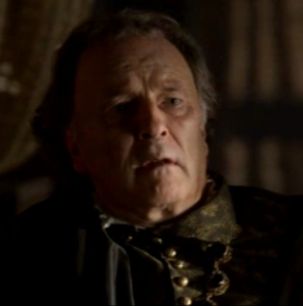 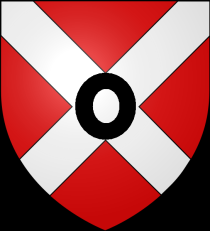 Click EasyEdit to update this page! (Don't see the EasyEdit button above? <a href="../#signin" target="_self">Sign in</a> or <a href="../accountnew" target="_self">Sign up</a>.)
| |
CHARACTER CONNECTIONSFamily members: Father: Sir Richard Neville, 2nd Baron Latimer (1468-1530), son of Sir Henry Neville and Joanna Bourchier (niece of the 1st Earl of Essex and Baron FitzWarin (great-grandfather of Lady Anne Stanhope), aunt of Lady Margaret Bryan and sister-in-law to Elizabeth Tylney who was Duchess of Norfolk by her second marriage and the grandmother of Anne Boleyn, Katherine Howard, and Henry Howard, Earl of Surrey). Mother: Anne Stafford (born c.1471), daughter of Sir Humphrey Stafford. Sisters: Margaret Neville Dorothy Neville Elizabeth Neville Susannah Neville Brothers: William Neville Thomas Neville Marmaduke Neville Cousins: because he descended from royalty by both parents, John was related to many of the nobility and royalty at the Tudor court. Paternal great-great-uncle: Henry Bourchier, 1st Earl of Essex who married Isabella Plantagenet (granddaughter of Prince Edmund of Langley and Infanta Isabella of Castile) -- their son Viscount Bourchier married Lady Anne, sister of Queen consort Elizabeth Woodville, and their granddaughter, Anne Bourchier, subsequently married William Parr. Paternal great-great-grandmother: Anne of Woodstock, Duchess of Buckingham (wife of Sir William Bourchier, 1st Count of Eu and Edward Stafford, 5th Earl Stafford), daughter of Prince Thomas of Woodstock, Duke of Gloucester (youngest son of King Edward III and Philippa of Hainault) and Lady Eleanor de Bohun. Marriage(s): (1) Dorothy de Vere (d. 7 February 1527), married c. 1520; daughter of Sir George de Vere and Margaret Stafford. Dorothy was the sister of the 14th Earl of Oxford. (2) Elizabeth Musgrave (d. 1530), married 20 July 1528; daughter of Sir Edward. They had no children. (3) Catherine Parr, married in 1534. No children. Children (by Dorothy de Vere): John Neville, 4th Baron Latimer (c.1520-1577), married Lucy Somerset, daughter of the 2nd Earl of Worcester and Eleanor Browne, had four daughters. Margaret Neville (c. 1526-1547), betrothed to Ralph, son of Sir Francis Bigod. Friends: Catherine Parr Anne Parr William Parr King Henry VIII Anne Boleyn Thomas Howard, 3rd Duke of Norfolk Henry Howard, Earl of Surrey Enemies: Thomas Cromwell, Earl of Essex Pilgrimage of Grace Robert Aske John Constable John Gostwick |
UNFORGETTABLE CHARACTER QUOTES
|
DEFINING EPISODES | MEMORABLE SCENES
|
PHOTOS
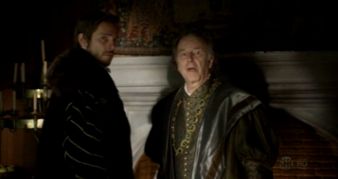 Lord Latimer "introduces" Thomas Seymour to his wife, Catherine Parr | 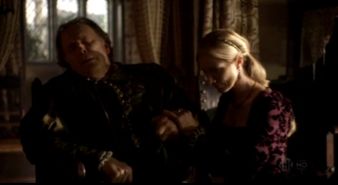 Catherine Parr looks after her ailing husband |
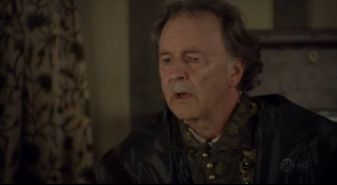 Lord Latimer sees that Catherine has been sent gifts from the King, Henry VIII | 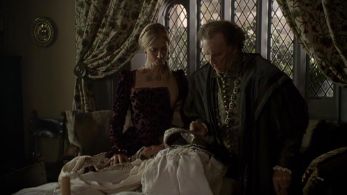 |
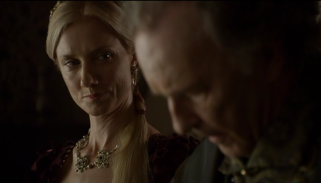 | 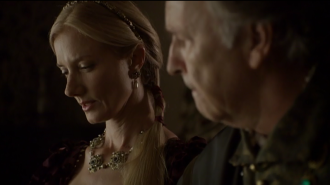 |
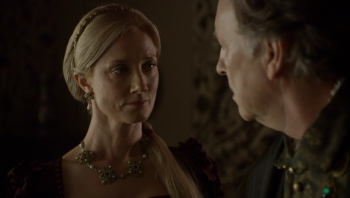 | 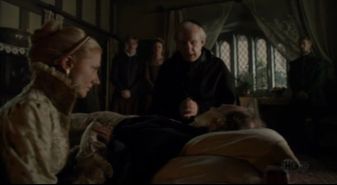 Lord Latimer on his death bed with his wife, Catherine Parr, beside him |
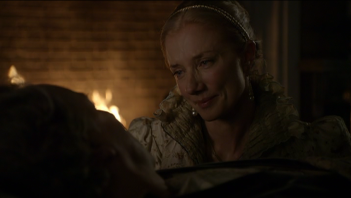 |